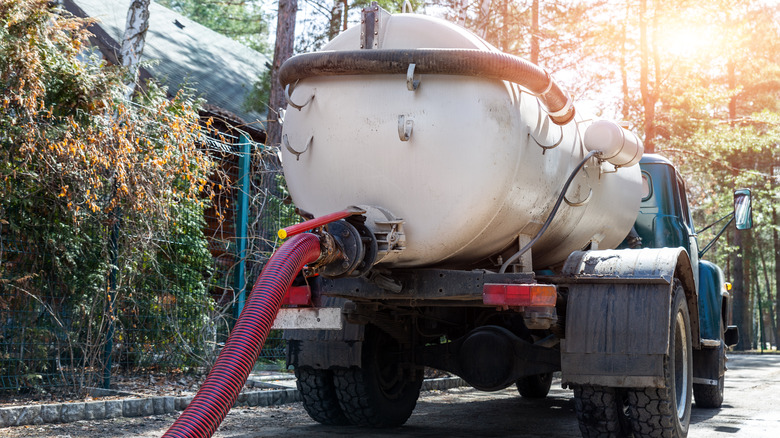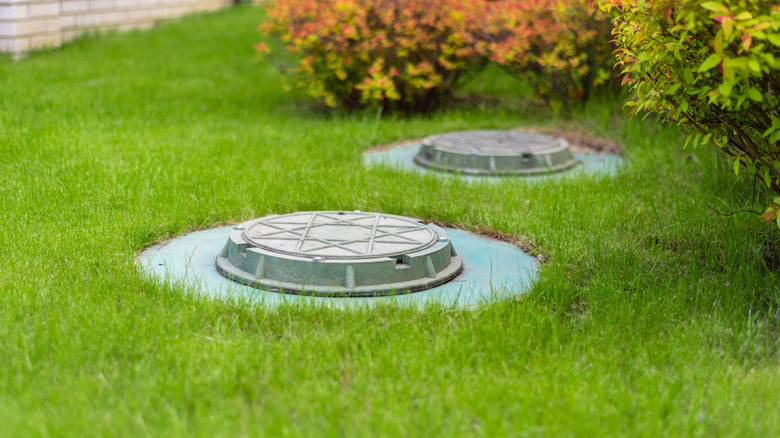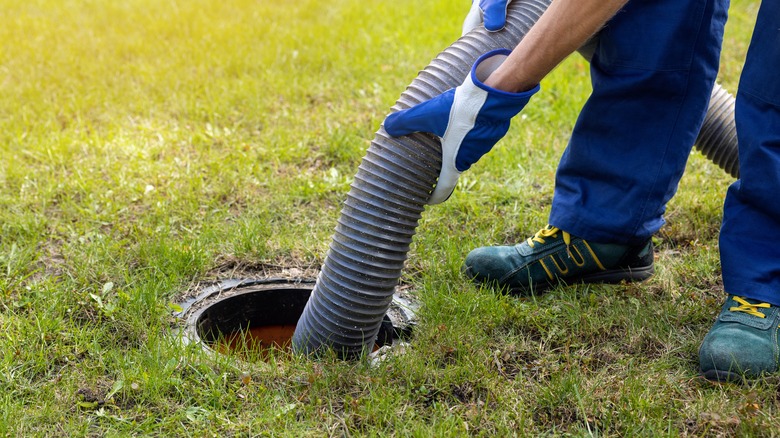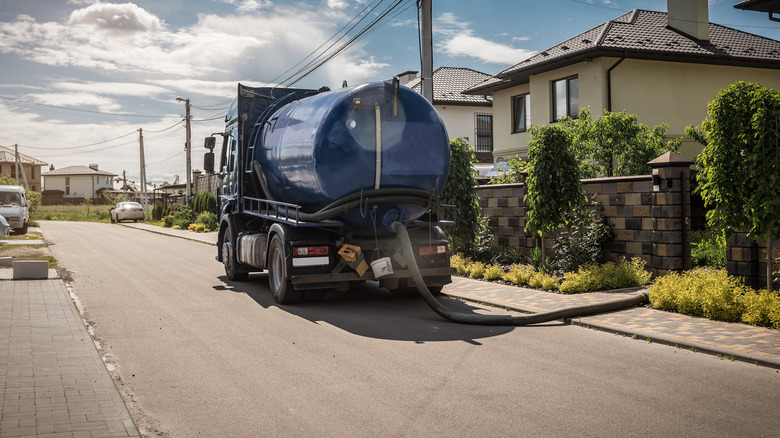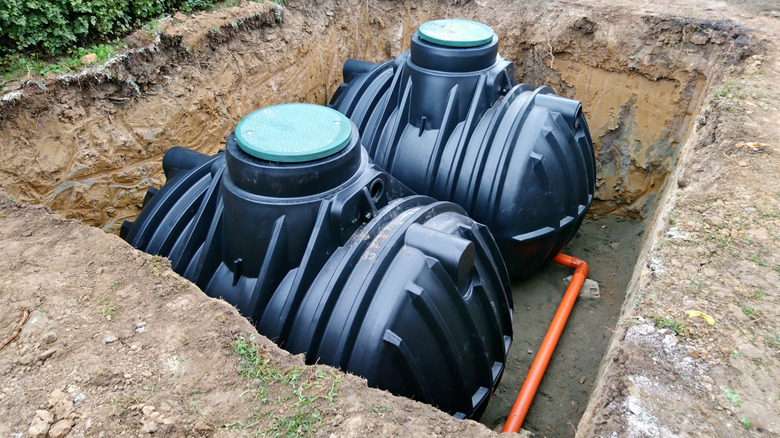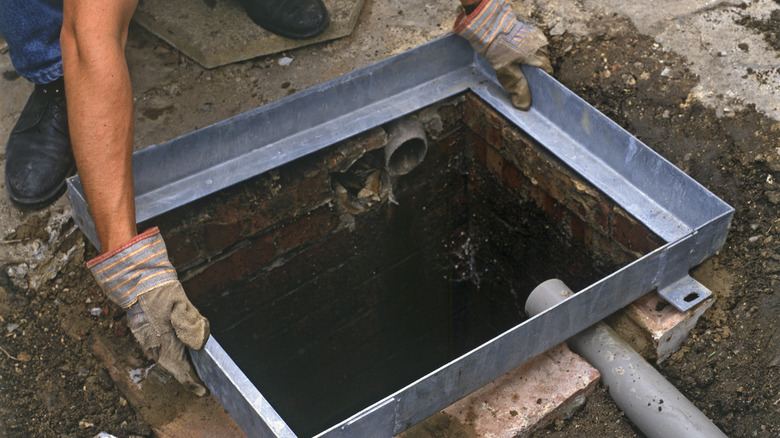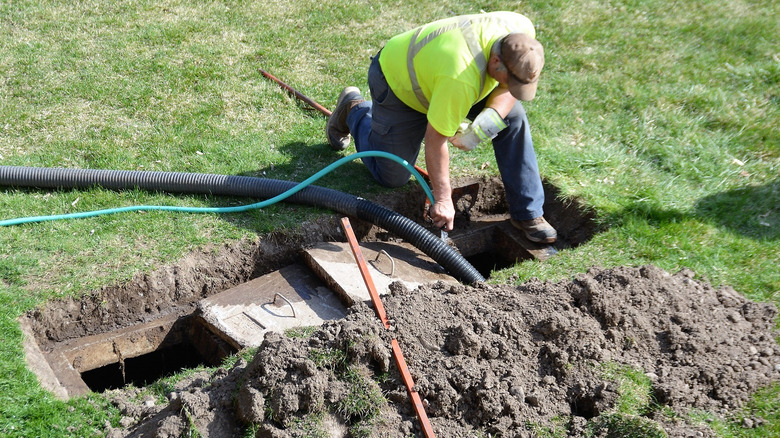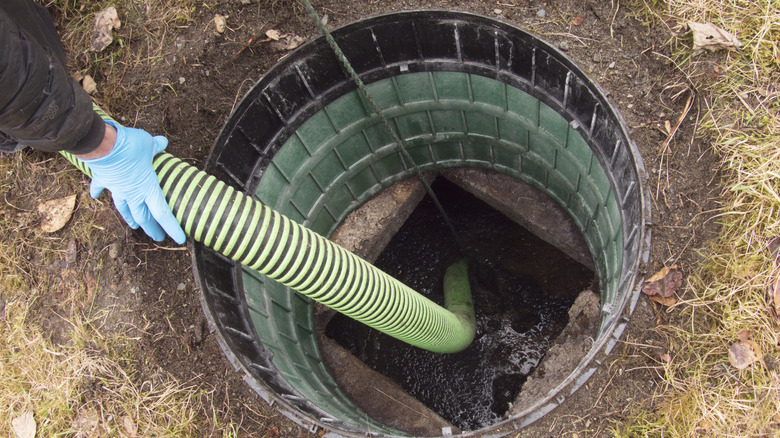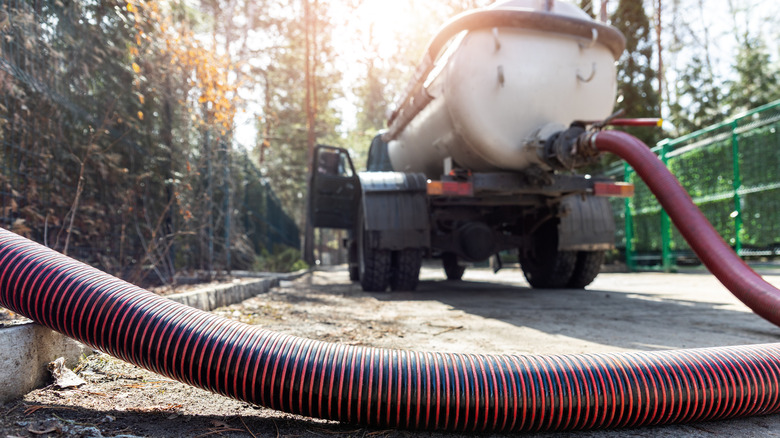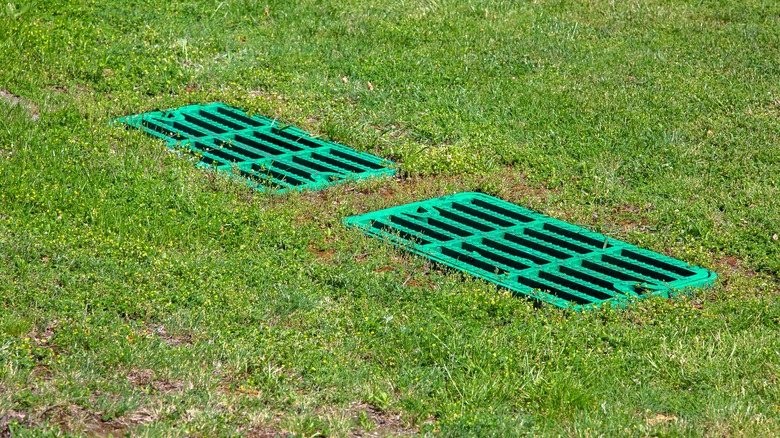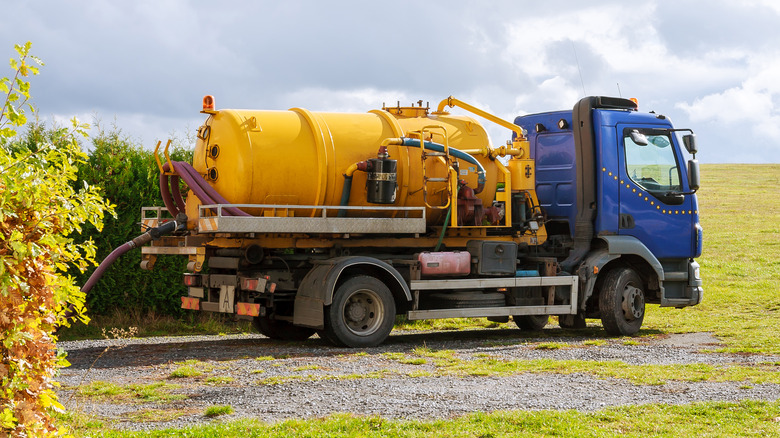Important Things To Know Before Pumping A Septic Tank
Before you can pump a septic tank, there are a few important things to know to avoid leaks and damage. Buildings not connected to a public sewer system will have a septic tank instead. A septic tank is a large, underground container designed to collect and treat wastewater. A septic system is kind of like a mini sanitation plant, right there in your backyard. Wastewater flows into the septic tank through a series of pipes. The solid waste settles to the bottom of the tank and forms a layer of sludge. The liquid waste (called effluent) rises to the top and exits the tank through an outlet pipe. The effluent is then dispersed into a drain field, where it is further treated by the soil.
Over time, the solid waste in the septic tank will accumulate and need to be removed. This is where septic tank pumping comes in. Septic pumping is not usually a DIY option. It involves removing the sludge and other solids from the tank using a vacuum truck. This process helps prevent the solids from building up to a point where they can clog the pipes, causing backups, or overflow into the drain field. It also helps maintain the overall health and functioning of the septic system. To make sure everything goes smoothly and you're not left with an expensive (and stinky!) mistake, be sure you know the questions to all the answers below before starting to pump.
The location of your septic tank
Before pumping your septic tank, you need to locate where it is. There is no one size fits all solution for septic tank placement. If you currently don't know where to find yours, there are a few different ways to hunt it down. The first thing you can do is to check your property records. When you purchased your house, you should have received paperwork like blueprints or previous inspection report information. Look over these forms to see if they indicate the location of the septic tank.
If you can't find anything, the next step is to look for inspection ports. These are small, capped pipes that are usually located near the septic tank, so if you find them, you will find it. Sometimes they can be a little tricky to locate. If that doesn't work, try following the sewer line instead. The sewer line is usually a straight line that runs from your home to the septic tank. In addition to this, sometimes there are really obvious signs of the septic tank's location, like a manhole cover or a raised mound in the yard.
Your septic tank's capacity
Knowing the capacity of your tank is crucial to determining how often you need to pump it. Thinking it's smaller or bigger than it is might cause overflow, or doing a messy chore more often than you need to. The frequency of septic tank pumping also depends on the size of your tank and the number of people in your household. If there are only two people living there, you will need to pump the tank less often than a large family of ten, no matter what the tank's size is.
To discover your tank's capacity, check the ever-important original building plans. This owner's manual typically contains everything you need to know about how much waste your tank can hold. If you don't have these papers (hey, it happens!) and you know where the tank is, sometimes the tank itself will have a manufacturer's label on its side. If you can't see the information, just knowing the make and model of the tank off the label is enough to look it up online.
If that fails, get in touch with your local or county health department. These agencies may have records about the septic system on your property.
The last time your septic tank was pumped
Before you set out to have your septic tank pumped, it's a good idea to find out about its last pumping. This is because pumping a septic tank too frequently can cause harm to the system. Overpumping removes the beneficial bacteria that break down waste. On the other hand, neglecting to pump your septic tank can lead to backups and costly repairs, or you may end up needing to replace your septic tank.
As a general rule, it's recommended that you have your septic tank pumped every 3-5 years. However, this timeframe may need to be adjusted based on the specific conditions of your system, plus how many people live in your house. Of course, if you notice signs of system backup, it doesn't matter when the last time you pumped the tank was. It's time to do it again ASAP. These signs are things like slow-draining sinks, tubs, or toilets, foul odors coming from drains or around the backyard, or standing water in your lawn. Once these things happen, disregard your pumping schedule and take care of things that day, if possible, so things don't keep escalating.
The information contained in its maintenance records
It is important to keep a record of when your septic tank was last pumped. You should also make note of any other maintenance or septic system repairs. This would be things like inspecting and cleaning the inlet and outlet baffles, repairing a crack, or replacing any parts. As you work, you can keep records and store them at home. This way, if you sell your house, the next owner has a fuller picture of what they are buying. These records can also be helpful to have on hand for home insurance purposes, so you can prove maintenance and upkeep. When you purchase a home with a septic system, it's always a good idea to speak to the previous owners about what records they have to pass on, as well.
Of course, if they don't have any records, it's no cause for concern as most of the information needed for routine septic tank maintenance can be discovered with a little hands-on research. It's just much easier to have the paperwork.
Your septic tank's age
The age of your septic tank can help determine if it is time to replace it instead of just pumping it. Older tanks may be more prone to leaks, cracks, or other issues, and may need to be replaced sooner than newer tanks. Unless you have the paperwork indicating exactly when the septic tank was installed, determining the age of a septic tank can be challenging, as there may not be any visible markings or documentation to indicate its age.
To get around this, try looking for a manufacturer's label first. You may need to remove the tank's cover to find the label, but this is still the fastest and easiest way to find out when it was created. There might not be a date on the label, but there could be a serial number, model type, etc. This should be enough information to strike gold with a quick Google search. If you don't have any luck, open your tank and look for any visible signs of aging. This would be cracks in the tank, rust in the baffles or along its outside, or corrosion anywhere in the system. If you see these, it's time to start thinking about a system replacement instead of just pumping it.
Whether your septic tank has any cracks or leaks
Even if your system is relatively new, it's still a great idea to check for damage before having it pumped. The last thing you want is to assume that everything is okay, start pumping, and have a load of raw sewage seeping up through your yard or running down your driveway. That's a costly (and smelly!) mistake. Instead, even if you don't have any concerns about the age of your tank, complete a once-over for any cracks, leaks, or corrosion before getting started.
If you find any, fix them before pumping to avoid a spill. But don't worry! It's easy to do so. Depending on the size and location of the crack or leak, you can typically use a sealant or epoxy to repair the damage. These materials are designed to be applied to the tank's surface and can help create a watertight seal. If the damage is more significant, you may need to install a patch or liner. You can usually purchase all the supplies for this at a local hardware store, like Lowe's or Home Depot, without hassle.
Is the area around your tank completely clear?
Before the septic tank pump truck arrives, you should take the time to clear access to the tank. First things first, be sure your gate is open and the truck can come up your driveway without issue. Next, take a look at any trees or bushes growing around your septic tank. Is there enough room for the truck to park safely, or will you need to trim the greenery back a bit? You should also look out for low-hanging branches that could be a "smack hazard" to anyone working in the area.
Once that is handled, observe if the septic tank is near any machinery, like a vehicle, tractor, golf cart, etc. These should be moved well clear of the job site before any work can begin, so the workers have plenty of room to operate. You should also make an effort to keep all animals (both housepets and working animals, like horses, cows, and sheep) away from the tank while it is being pumped. The last thing you need is an animal falling in!
Is there likely to be a blockage?
Things like diapers, feminine hygiene products, and even large wads of toilet paper can clog up your septic system. Other household waste, like grease and chemicals, can also cause issues. Before having your septic tank pumped, it's important to know if there is a blockage that will need to be addressed, or if this is just a routine pumping.
The time and effort it takes to clear a blockage before pumping a septic tank can add costs to the task. If you hire a third-party company to help and don't tell them about the extra work, you might be charged a fee when they arrive. It's also possible that the extra work can cause the clean-up to go long, so it won't be finished when you were told it would be. To avoid any surprises, check for signs of a blockage (like slow-draining sinks, foul smell, etc.) beforehand and let the septic contractors know about it. And don't flush diapers!
Live electricity can cause major harm
Shut off any electrical components attached to the tank before the pumping process begins. Anything connected to the tank, like a pump or alarm, can cause injury to those manning the pump when it's still on. This is because septic tanks contain organic matter that can produce methane gas as it decomposes. Methane gas is highly flammable and can ignite if it comes into contact with an ignition source, like an electrical spark. This can cause a massive explosion that can result in severe injury, total destruction of property, and even death.
If that's not bad enough, if there is a leak in the septic tank or pumping system, any live wires can significantly increase the risk of electric shock. This is because the liquids in the area are great conductors of electricity. So if a person comes into contact with the liquid while also touching a live electrical source, they could get a deadly electric shock. To be safe, turn off all power sources to the pump before starting.
The location of the drain field
Before pumping your septic tank, locate the system's drain field. It's important to know where it is to prevent damage to it during the pumping process. The drain field, sometimes called a leach field or absorption field, treats and disposes of the effluent (wastewater) that exits the septic tank. If it's not working correctly, or is blocked, disaster is not far away.
Without a functioning drain field, the effluent would have nowhere to go and could back up into the septic tank, leading to costly and potentially hazardous issues. A poorly designed or maintained drain field can also lead to clogging, which can result in system failure and the need for expensive repairs or a replacement of the entire system. To avoid this, be sure you know where it is before things get started.
The drain field is usually located downstream from the septic tank. Look for areas of the yard that are greener or more lush than other areas. This will tell you where the drain field is located, as it's like free fertilizer for the plants. In addition, the terrain of the drain field area is usually raised as it is built up with layers of soil and gravel. So to find it, look for areas of the yard that are slightly elevated or mounded.
The plan for the waste after it is pumped
You should plan for the proper disposal of the waste that is removed from your septic tank. Since it's raw sewage, it's not like you can just...throw it away. You also don't want to be scrambling for a solution with a truck full of sewage standing by. Septic pumping companies offer disposal services for an additional fee, and they will transport the waste to a treatment plant or disposal site. Once arrived, the waste may be treated and reused as fertilizer. In other cases, it may be disposed of in a landfill or incinerated.
If you have any questions about the process and want to make sure you're following local ordinances, it is best to contact your local government for guidance on how to dispose of the waste from your septic tank that is specific to your area. Guidelines can change from state to state and sometimes even county to county, so check in first. They'll also be able to recommend trusted septic removal contractors and companies.
Do you need a professional waste disposal company?
It is not recommended for individuals to pump their septic tanks, unless they have lots of previous experience. Septic systems are complex and potentially dangerous systems that require specialized knowledge and equipment to maintain properly. This is because septic tanks contain hazardous waste, like raw sewage that can pose health risks if handled improperly. Attempting to pump your septic tank without the proper training and equipment could result in serious injury or illness.
So, it's always best to hire a professional septic tank pumping service to handle the job. A professional septic tank pumping service will have the necessary equipment and experience to safely and efficiently pump and dispose of the waste from your septic tank. They will also be able to inspect your septic system for any signs of damage or issues that may require repair.
However, sometimes you have a septic tank because you live in a more remote area, or because you prefer to live off the grid. If this is the case, with the proper training and preparation, it is possible to pump your tank. This is only recommended if you can rent the necessary equipment to complete the task safely and have hopefully completed the chore previously.
